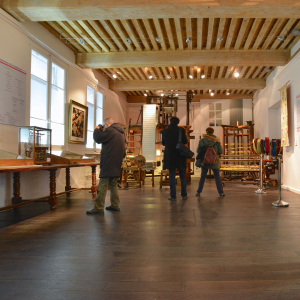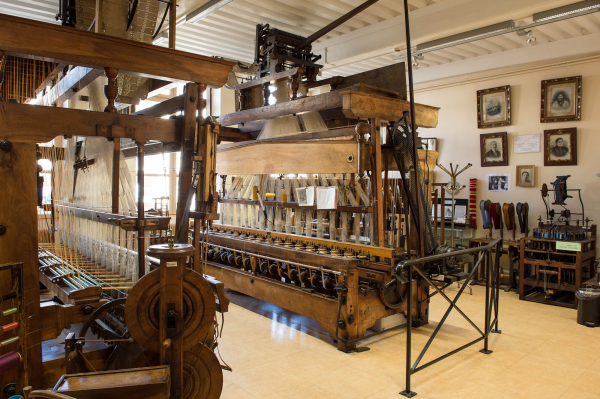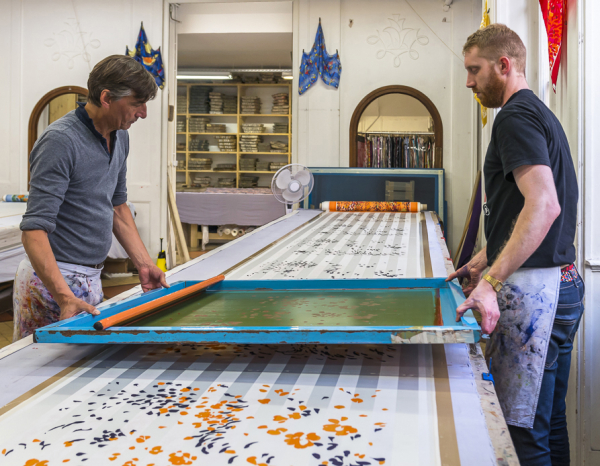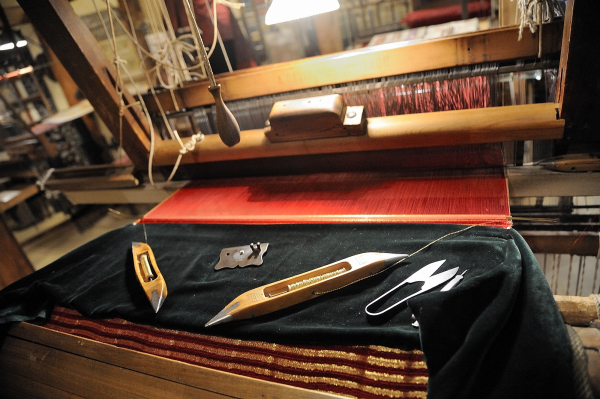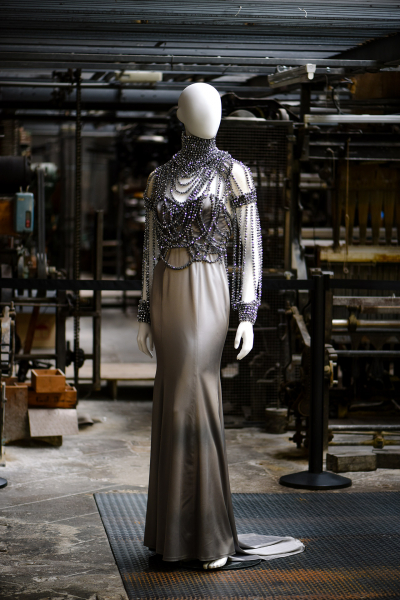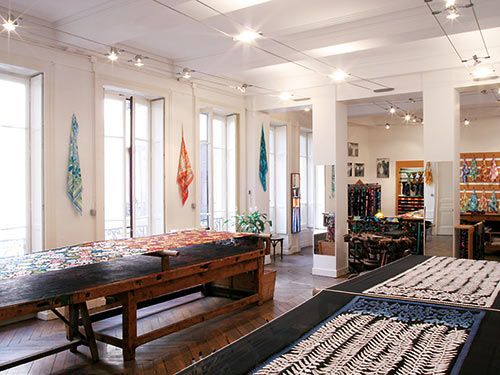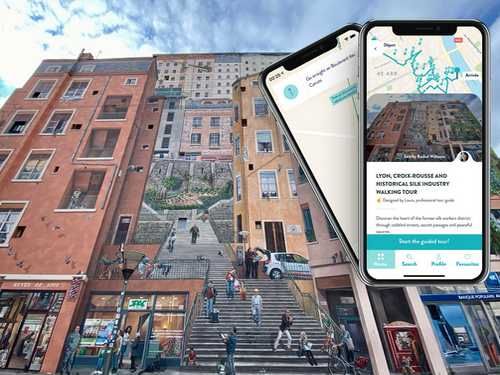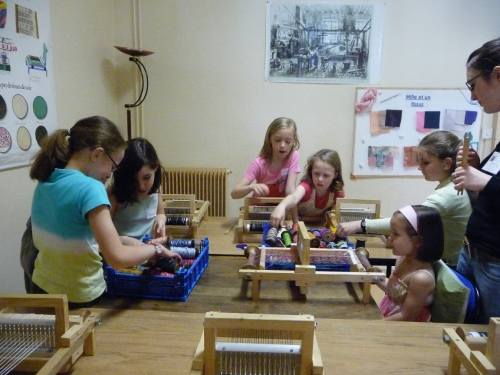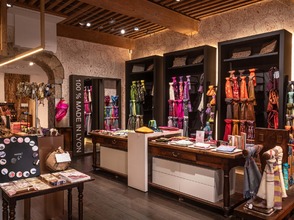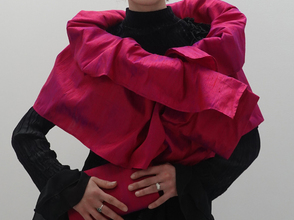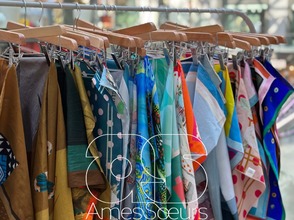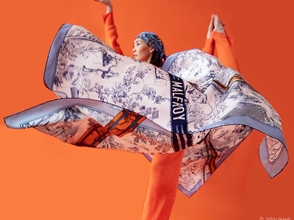- Out and about
- Culture and Leisure
- Culture and museums
- How to weave silk like a real canut
How to weave silk like a real canut
Silk in Lyon: a story with many threads!
Bon plan
Last updated date : 19/07/2024
Silk is a centuries-old tradition in Lyon, which has been lovingly preserved thanks to a few passionate individuals who have kept this outstanding heritage – the city’s pride and joy – alive.
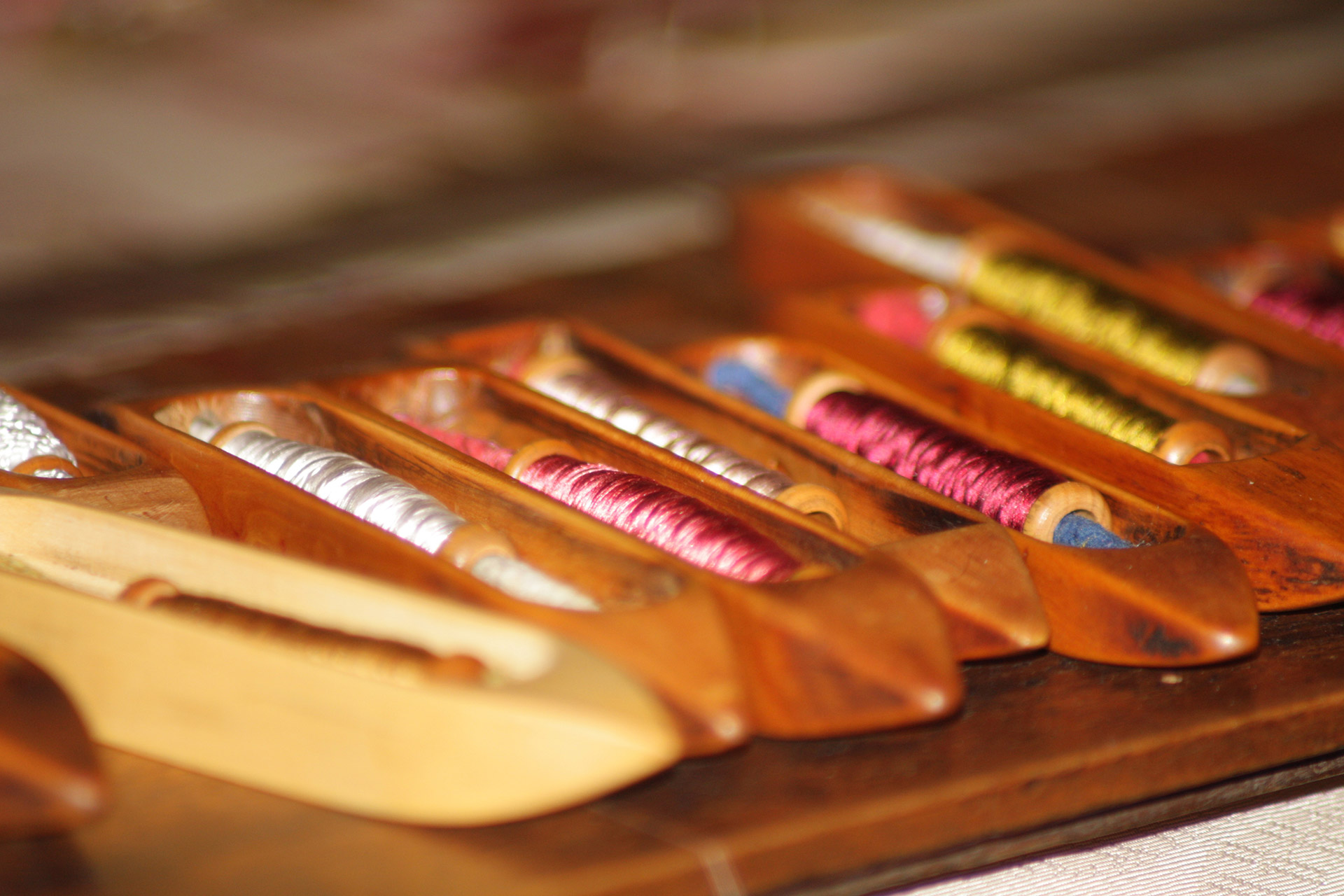
See all pictures
The history of Lyon’s silk industry
The beginning of the story takes us all the way back to the time of Louis XI, who wanted to develop the silk industry in France… However, it did not really get going until the Renaissance, in 1536 to be precise, when Francis I granted Lyon the privilege of weaving silk, gold and silver yarn. Weavers set up their workshops in the Saint-Georges neighbourhood, in the district of Vieux-Lyon (Old Lyon), as it is known today.
‘La Fabrique’ (Lyon’s silk industry) was born, including the various stages of production, right up to the sale of silk products. It was the beginning of a flourishing industry, until the French Wars of Religion. Lyon was one of the stages on the Silk Road.
Techniques became more sophisticated as the years passed, in particular with the draw loom in the seventeenth century, which enabled patterns to be weaved.
Louis XIV began the fashion of Lyonnais silks in Versailles, which rapidly spread throughout Europe.
La Fabrique enjoyed splendid growth in the eighteenth century, pursuing excellence through creative and technical innovations. Following a rough ride during the French Revolution, La Fabrique was supported by Napoleon and reached its peak in the nineteenth century, making Lyon the world capital of silk, and France’s main export industry.
With the arrival of synthetic textiles in the twentieth century, Lyon’s silk industry suffered badly, from them on supplying only fashion houses and Europe’s chateaux.
Where can you see weaving looms and techniques at work?
La Maison des canuts
‘La Maison des Canuts’ is an eco-museum that tells the story of Lyon’s silk industry (La Fabrique) and the ‘Canuts’ (silk workers), from the origins of silk to the Canut revolts. It also presents the different stages of weaving and the cycle of the silk worm.
In its workshop next door, you can also see weaving demonstrations on a nineteenth-century Jacquard loom.
The Maison des Canuts still delivers its exceptional fabrics throughout the world.
Find out more about 'Maison des Canuts'
The association Soierie Vivante
The association Soierie Vivante fights to save the heritage of silk in Lyon, by preserving the last two traditional weaving workshop-apartments, like those the Canuts used to live and work in: the Municipal weaving workshop and passementerie (decorative trimming) workshop. These workshops are open to visitors and put on weaving demonstrations on Jacquard looms. They also share their knowledge with introductory weaving classes for children and adults.
Find out more about Soierie Vivante
L’Atelier de Soierie
At the bottom of the slopes of Croix-Rousse Hill, L’Atelier de Soierie keeps the technique of printing on silk alive in its workshop and outlet, where the flat-frame, or Lyonnais printing method and block printing method are still used. You can also see the work of the fabric painters. Tours of the workshop are available.
Find out more about L'Atelier de Soierie
Soierie Saint-Georges
This is the last operational weaving workshop in Vieux-Lyon (Old Lyon), which uses nineteenth-century Jacquard looms. The very first workshops appeared in Vieux-Lyon in the sixteenth century.
Ludovic de la Calle, and his two sons Romain and Virgile, share their knowledge and skills as they present the history of silk-making in Lyon.
Find out more about Soierie Saint-Georges
The Mattelon weaving workshop
This is the last family workshop in Lyon, belonging to the Mattelon family, which remained operational until the death of master weaver Georges Mattelon in 2004.
It houses a hand loom on the 2nd floor and a mechanical loom on the ground floor. You can visit the workshop and watch weaving demonstrations, with explanations of the techniques used and information about La Fabrique des Soies.
Find out more about the Mattelon Weaving Workshop
Musée des Soieries Bonnet in Jujurieux
It’s one of Europe’s largest silk-weaving factories, where visitors can take in weaving demonstrations, meet former workers, consult the archives, and admire fabrics created for the biggest brands (Dior, Chanel, etc.). Explore 200 years of the history of silk in a factory that employed up to 1,200 people.
find out more about Musée des Soieries Bonnet
Where can you see beautiful fabrics from the past and present?
Le Musée des Tissus (Textile Museum, currently closed for renovation)
It is home to an extraordinary collection of textiles, the oldest of which date back to Ancient Egypt.
It presents the richness of silks produced by La Fabrique in Lyon, as well as contemporary creations.
Find out more about the Musée des Tissus
Le Musée des Soieries Brochier
Lyon’s youngest museum opened in May 2022 in the heart of Grand Hôtel-Dieu!
It retraces 130 years of the history of this powerful Lyon silk-making family, and exhibits collector items produced for the biggest haute couture creators (Givenchy, Valentino, Christian Lacroix, YSL, etc.), as well as pieces inspired by works from artists such as Miró, Calder or Cocteau), not to mention the developments that led from the original Jacquard loom to today’s technical fabrics. Store.
Find out more about Musée des Soieries Brochier
How to visit the weaving workshops and explore the neighbourhoods where the ‘Canuts’ (Lyon’s silk workers) used to live and work?
Follow a guided tour in English!
VISIT
Guided tours in the footsteps of the Canuts
Where to learn about weaving?
Soierie Vivante regularly holds weaving workshops for adults and children.
- Weaving classes for adults
- Weaving classes for children
- Samedis des P'tits Filous
- Block printing workshop for adults at Brochier Soieries
Where to buy authentic Lyonnais silk?
What better than a beautiful stole, scarf or tie to bring home from your stay in Lyon, as a gift or souvenir?
Here are a few authentic addresses:
